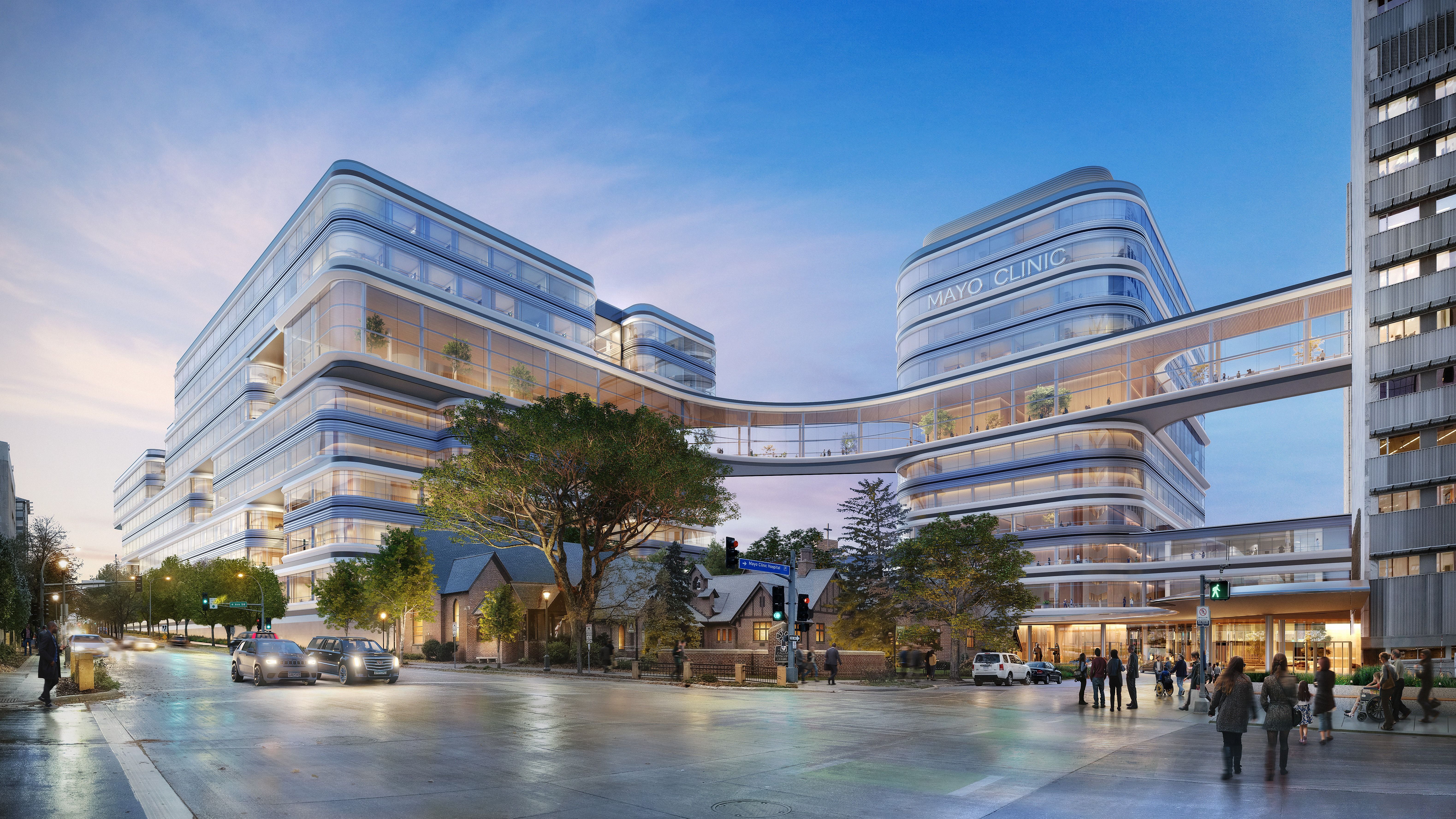Looking at Mayo Clinic’s $5B plan to transform its main campus
The multi-year project will feature new technology and the ability to adapt for future needs, officials say.
The Mayo Clinic is embarking on a $5 billion plan to transform its main campus in Rochester, Minn.
Mayo Clinic is embarking on a $5 billion plan to transform its main campus in Rochester, Minn. (Image credit: Mayo Clinic)

Gianrico Farrugia, Mayo Clinic’s president and CEO, calls the initiative “a once-in-three generations opportunity to redefine the future of healthcare."
The Mayo Clinic announced the new plans at an event in Rochester Tuesday. The plan calls for five new buildings that are malleable enough to adjust to changes in healthcare.
Farrugia said in a Mayo Clinic news release that the plan will “enable transformation by blurring the lines across hospital, clinic and digital care to help our teams anticipate our patients' needs, accelerate more cures and greater connections to our patients."
The Rochester project will take years to develop. While some work is already underway, more construction is slated to begin early next year. Mayo Clinic says some facilities could open by 2028, and the full project is expected to be finished by 2030.
Mayo Clinic has labeled its transformation plan: “Bold. Forward. Unbound.” Other projects are underway at Mayo Clinic campuses in Florida, Arizona, Wisconsin and Mankato, Minn.
The system says its plans for the Rochester campus go beyond simply constructing new facilities. Farrugia characterizes it as a milestone in Mayo Clinic’s 160-year history.
“This vision is about more than simply new and better spaces for patients and staff,” Farrugia said in a video describing the plan.
“It’s about an entirely different way of thinking about how we use space and understand space in healthcare,” he said. “How to build a physical infrastructure that reinforces our seamless, dynamic and self-improving platform model of care. Space that can grow. Space that can adapt to meet the changing needs of both our patients and our staff.”
With more healthcare shifting outside the hospital, including outpatient services and hospital-at-home programs, Mayo Clinic said its plans are meant to embrace digital health while still meeting the needs for in-person care.
"We will always need a place for our patients to receive in-person care,” Christina Zorn, Mayo Clinic’s chief administrative officer, said in a statement. “It’s exciting to imagine what could be possible by seamlessly integrating digital capabilities and physical spaces."
The plans also call for “unified care neighborhoods” to enable patients to get more of the services they need in one area, rather than going across campus for treatments or procedures, including some that would be typically thought of as outpatient services.
The new buildings are planned to cover about 2.4 million square feet of space, and they will be designed to accommodate future expansion.
Much of that space includes plans for two new clinical buildings that will each be nine stories (221 feet) high, but the buildings will be designed to allow for more construction vertically, potentially rising about 200 feet higher, or an additional nine stories.
In addition, the new facilities will be designed with digital upgrades to allow nurses to spend less time on clicking and documenting patient encounters, allowing them to spend more time on caring for patients, the system says.
Mayo Clinic says the project calls for a “flexible grid,” allowing spaces and whole floors to be revamped in the future. Spaces for patients could be converted to operating rooms under the design plans.
Minnesota Gov. Tim Walz, who attended the Mayo Clinic announcement, hailed the new $5 billion project, saying in a post on X, “Minnesota is positioned to lead the world in medicine well into the future.”